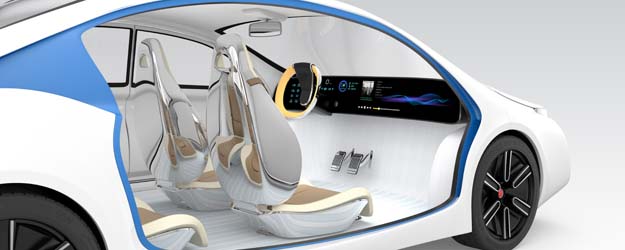 Semi-Autonomous Vehicles Are Only a Few Years Away Semi-Autonomous Vehicles Are Only a Few Years Away
How soon—really—are regular Americans going to be able to ride around in self-driving cars? You know, where you get in the driver’s seat, key in a destination on your car’s computer, and then sit back with a cup of coffee in one hand and a tablet in the other while your car drives you to work.
Ten years? Twenty? How about four?
As soon as 2020, your morning commute could be drastically different from what it is today. No more struggling to merge onto the crowded freeway or to avoid that distracted driver veering into your lane. Just leave it to your semi-autonomous car, while remaining ready to take control if a confusing situation arises.
BusinessInsider.com predicts that as many as 10 million self-driving cars could be on the road by 2020. Google, Tesla, BMW, Mercedes-Benz, Audi, Nissan, Toyota and Ford are all at various stages in the development process. There are even rumors that Apple has a secret car lab.
But, how much autonomy are we talking? On the National Highway Traffic Safety Administration (NHTSA)’s scale of vehicle automation, most cars on the road today are Level 1 or 2. In 2020, more and more cars will be Level 3, while Level 4 is further on down the road.
- Level 0: A car that performs no automation functions, which was the case for most cars until the 1980s.
- Level 1: Cars with at least one “function-specific automation system,” such as anti-lock braking (ABS), adaptive cruise control or electronic stability control. These features assist you while driving but don’t take away your responsibility to be engaged.
- Level 2: At this level, vehicles take control of certain functions, particularly in emergency situations. This includes self-braking if the vehicle gets too close to the one ahead of it. And, some vehicles can parallel park themselves.
- Level 3: Moving from Level 2 to Level 3, the vehicle is now fully in control of itself in most traffic and weather conditions. A driver must still be available to take control but will receive plenty of warning that a questionable situation is approaching, allowing time to set down that tablet and focus on the road.
- Level 4: Now the driver’s only task is to tell the car where to go. The car takes care of everything in between.
The benefits of self-driving cars extend beyond a more relaxing ride to the office, of course. Crash avoidance technologies may reduce traffic congestion and, most importantly, the number of injuries sustained and lives lost in accidents. Furthermore, automated control systems can fit in with the flow of traffic more efficiently than human, leading to reductions in fuel consumption and greenhouse gas emissions.
Obstacles in the Road: Regulation, Security
Despite all of the research and development currently underway, the obstacles between you and the keys to your first semi-autonomous car are more than technological. Only a handful of states—including California, Nevada, Texas and Florida—have regulations, enacted only recently, that allow semi-autonomous vehicles on the road at all. And, many in the industry are calling for the federal government to enact nationwide regulations.
However, lawmakers face some daunting questions that have never been asked before, such as: Who is responsible if there is no human in control? Who, or what, is legally considered the driver? How could police determine responsibility in a collision between two driverless cars? If an automobile is able to drive itself without human intervention, why would it need a steering wheel and gas pedal?
Then there’s the issue of hacking. Because computers will be a major part of semi-autonomous cars, federal legislators have voiced concerns about cybercriminals hacking personal information or taking control of a vehicle on the open road.
Self-driving cars will require insurance, too, but insurance companies don’t yet have the data to predict risks and potential costs. Will drivers need auto insurance if they never even touch the steering wheel? How much liability coverage will states require if the number and severity of accidents begin to fall, as is widely expected?
Of course, drivers themselves have some reservations of their own. The act of driving has long been associated with freedom and control, two things not everyone will give up easily. So, perhaps the ultimate question is not when self-driving cars will be ready for us, but when we will be ready for self-driving cars?
See the original article here: http://www.safeco.com/blog-detail/self-driving-cars/1240030265682
Posted Tuesday, May 17 2016 9:00 AM
Tags : Auto
|